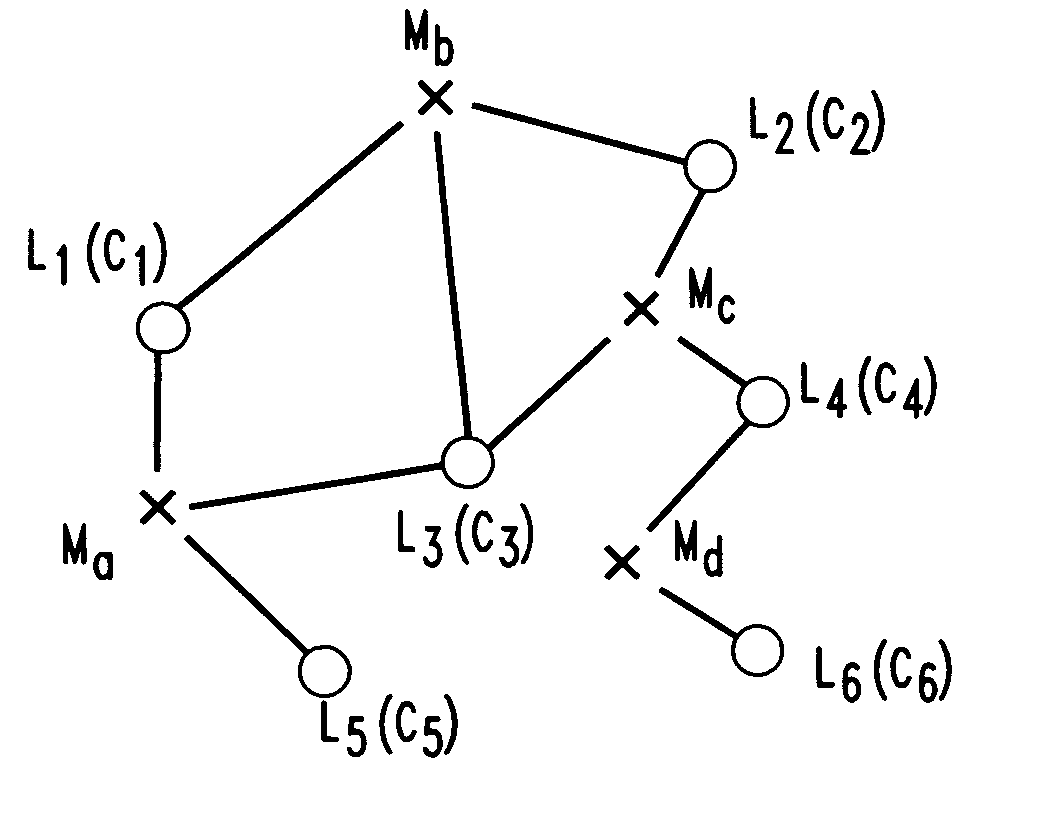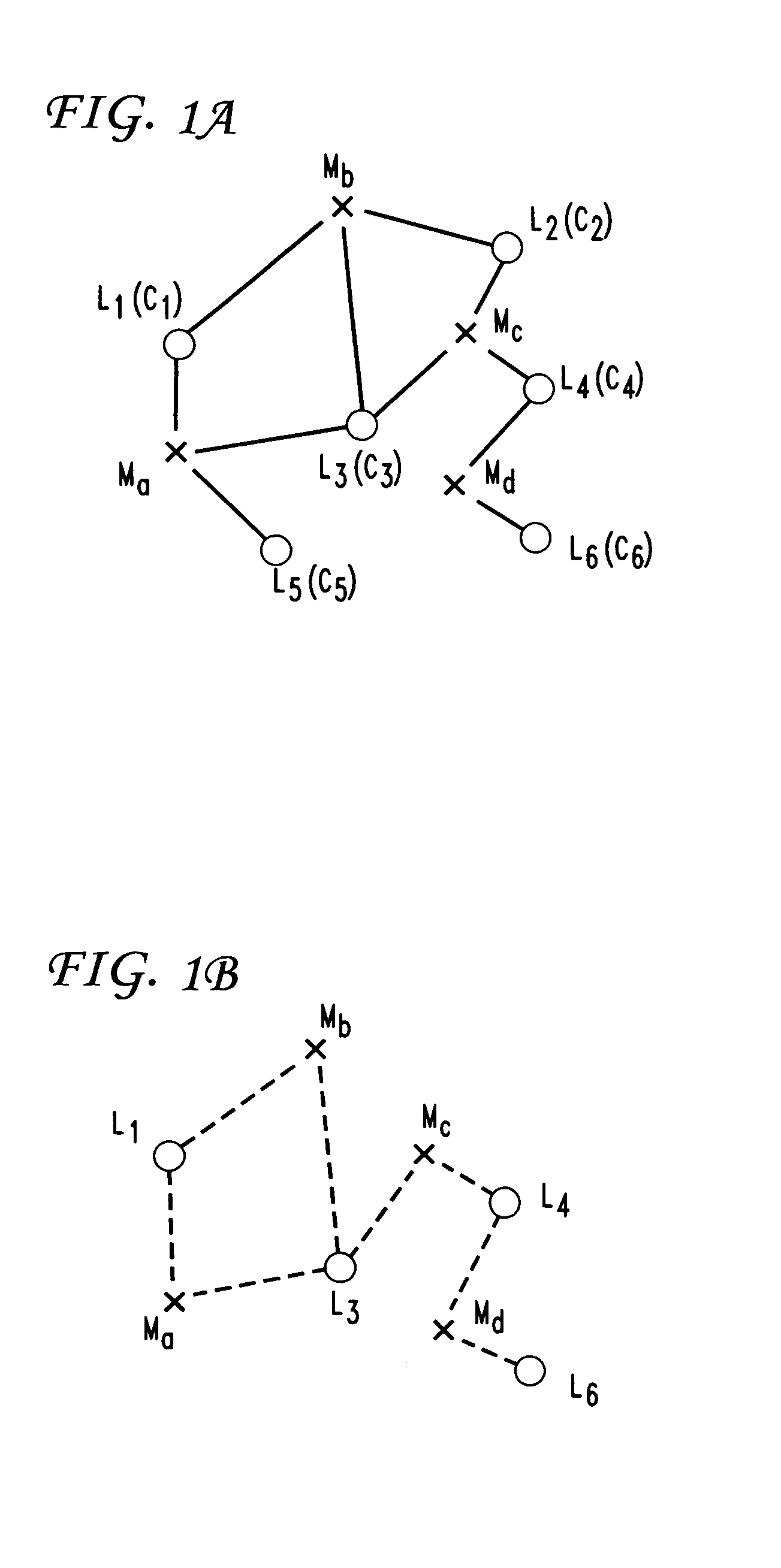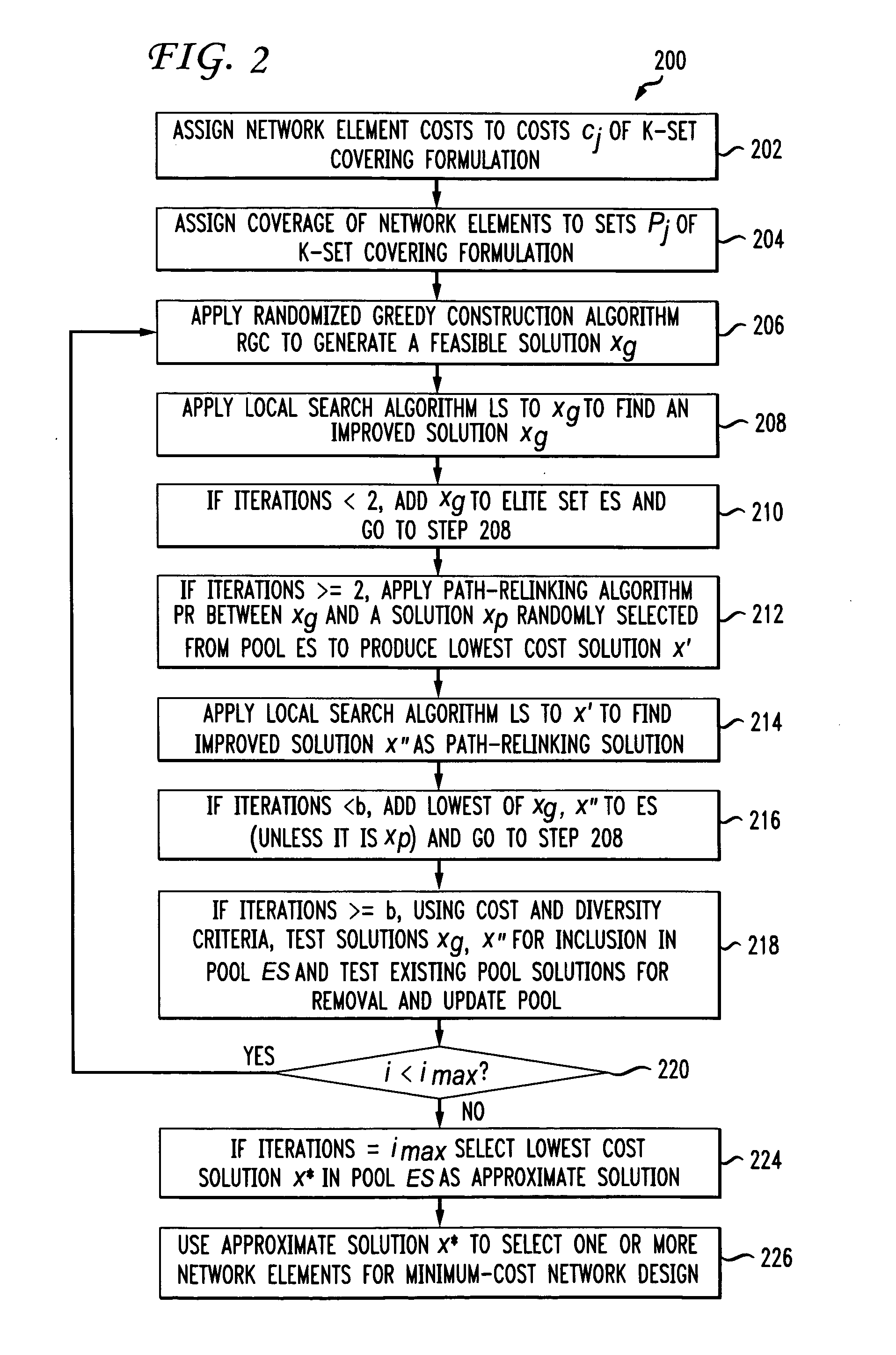Networks with redundant points of presence using approximation methods and systems
a network design and approximation method technology, applied in the field of network design, can solve the problems of missing snps of tags in one or more haplotypes, cost associated with their deployment, and none of these prior art techniques provide minimum-cost network design methods
- Summary
- Abstract
- Description
- Claims
- Application Information
AI Technical Summary
Benefits of technology
Problems solved by technology
Method used
Image
Examples
examples
[0112]The quality and running times of solutions obtained using the three heuristics were compared against a benchmark provided by the commercial integer programming solver CPLEX 11. Some examples are set out below.
[0113]The computer system of FIG. 7 was provided by an SGI Altix 3700 Supercluster (32 1.tGHz Itanium-2 processors and 256 Gb of shared memory) running Linux (RedHat Advanced Server with SGI ProPack). Codes were written in C and compiled. Each run described below was limited to a single processor.
[0114]Tests were run on the 45 samples provided by Beasley (J. E. BEASLEY, OR-Library: Distributing test problems by electronic mail, Journal of the Operational Research Society, 41:1069-1072, 1990). Each of the 45 samples was run with
kmin=2,kmax=min∑j=1naij,andkmed=(kmin+kmax) / 2,
for a total of 135 test instances. Each instance was run 10 times and the best results over the 10 runs are considered.
[0115]GRASP with path-relinking. In the experiments involving GRASP with path-relink...
PUM
 Login to View More
Login to View More Abstract
Description
Claims
Application Information
 Login to View More
Login to View More - R&D
- Intellectual Property
- Life Sciences
- Materials
- Tech Scout
- Unparalleled Data Quality
- Higher Quality Content
- 60% Fewer Hallucinations
Browse by: Latest US Patents, China's latest patents, Technical Efficacy Thesaurus, Application Domain, Technology Topic, Popular Technical Reports.
© 2025 PatSnap. All rights reserved.Legal|Privacy policy|Modern Slavery Act Transparency Statement|Sitemap|About US| Contact US: help@patsnap.com



